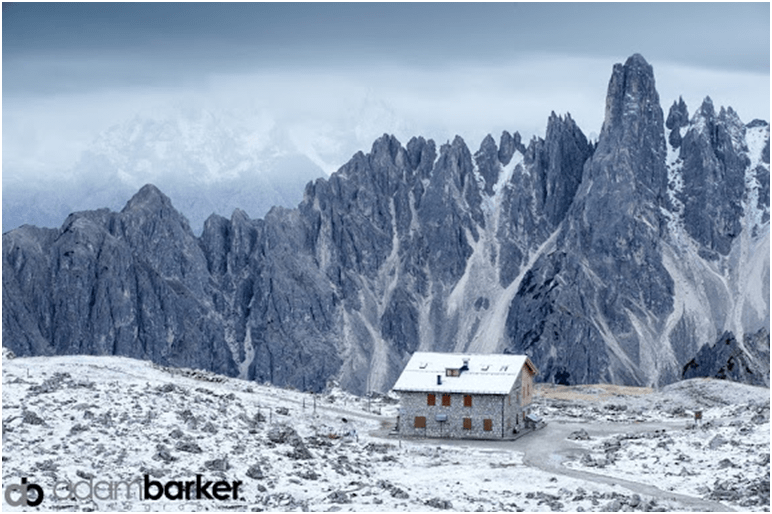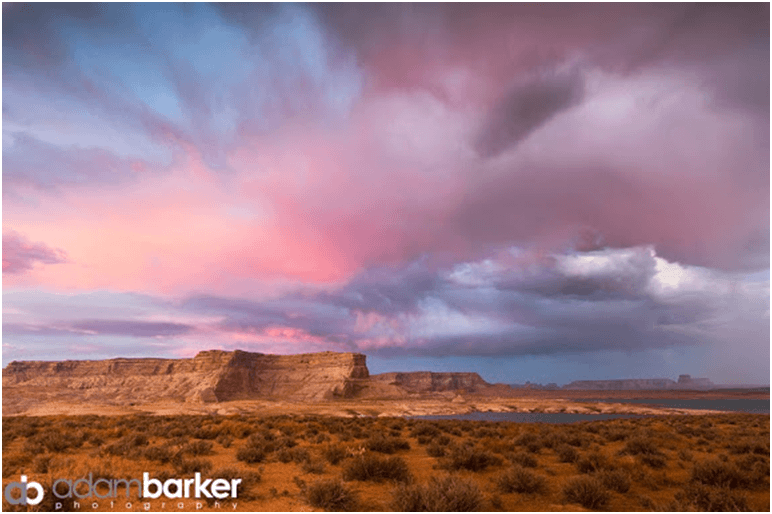Several weeks ago, I left my house in a hurry in hopes of capturing some late-light images up a local canyon here. Don’t you fret—I was fully clothed! I arrived at the location and began setting up my equipment.
Suddenly I was flabbergasted to realize I’d forgotten my filter pouch. All of a sudden, I felt incredibly naked. No…worse. I felt…powerless. Not a good feeling.
Sure, there are a few alternative techniques to simulate some effects of filters out there; but for my workflow, and my preference, I simply did not feel comfortable without my most trusted tools for capturing dynamic imagery — my Singh-Ray Graduated Neutral Density filters. I couldn’t recall the last time I actually had to consider shooting without my ND Grad filters, but it very suddenly dawned on me just how integral they are to helping me do what I do.

Intense summer storm at sunset over Devil’s Castle, Alta, UT. 3-stop Reverse Grad ND
“So, why do I rely so much on a small piece of high-grade resin? The truth is this: despite perhaps more ‘modern’ alternative methods to handling challenging exposures behind the lens, I’ve not found anything that compares to the ease and consistency of using ND Grad filters to help me capture each raw image with a more natural light balance. In simple terms, the filters allow me to capture the light balance in each scene the same way my eyes sees it. We’ve all experienced the frustration that occurs when our camera can’t seem to translate the range of light levels in a scene the same way our eyes do. What many may not realize, however, is that this is due to the much wider range of exposure levels between the dark shadows in the foreground to the bright highlight areas in the sky and distant background.
“Simply put, even the most advanced cameras these days are not able to “see” as our eyes see. The range of light must be moderated, and that is where ND Grad filters are so useful.
“I understand there are many who will argue the method in moderating outdoor exposures (and perhaps with great validity), but for me, there is no replacement for my filters. Using ND Grads on site means that I will only spend a fraction of the time on the computer in post processing than I would otherwise. What’s just as important is the fact that I have immediate assurance right there on my LCD display that I have nailed a keeper. Using ND Grads also gives me the mobility to quickly and efficiently adapt my filtration whenever the light and weather conditions are changing at a rapid pace.
“If you’re reading this blog post and nodding your head, then don’t ever leave home without your ‘photographic pants.’ If you’re wondering what the hype is all about, take the plunge and enjoy! You’ll never look back.”

Classic Bavarian Fall scene near Garmish-Partenkirchen, Germany.
LB Warming Polarizer and 2-stop hard step Grad ND
Adam Barker has traveled the world capturing unforgettable imagery for clients ranging from Volkswagen of America to Deer Valley Resort. He has drawn praise for his instructional DVDs and workshops alike. Check out his upcoming workshops on his website (including Fall Foliage, Desert Southwest and Antarctica).




